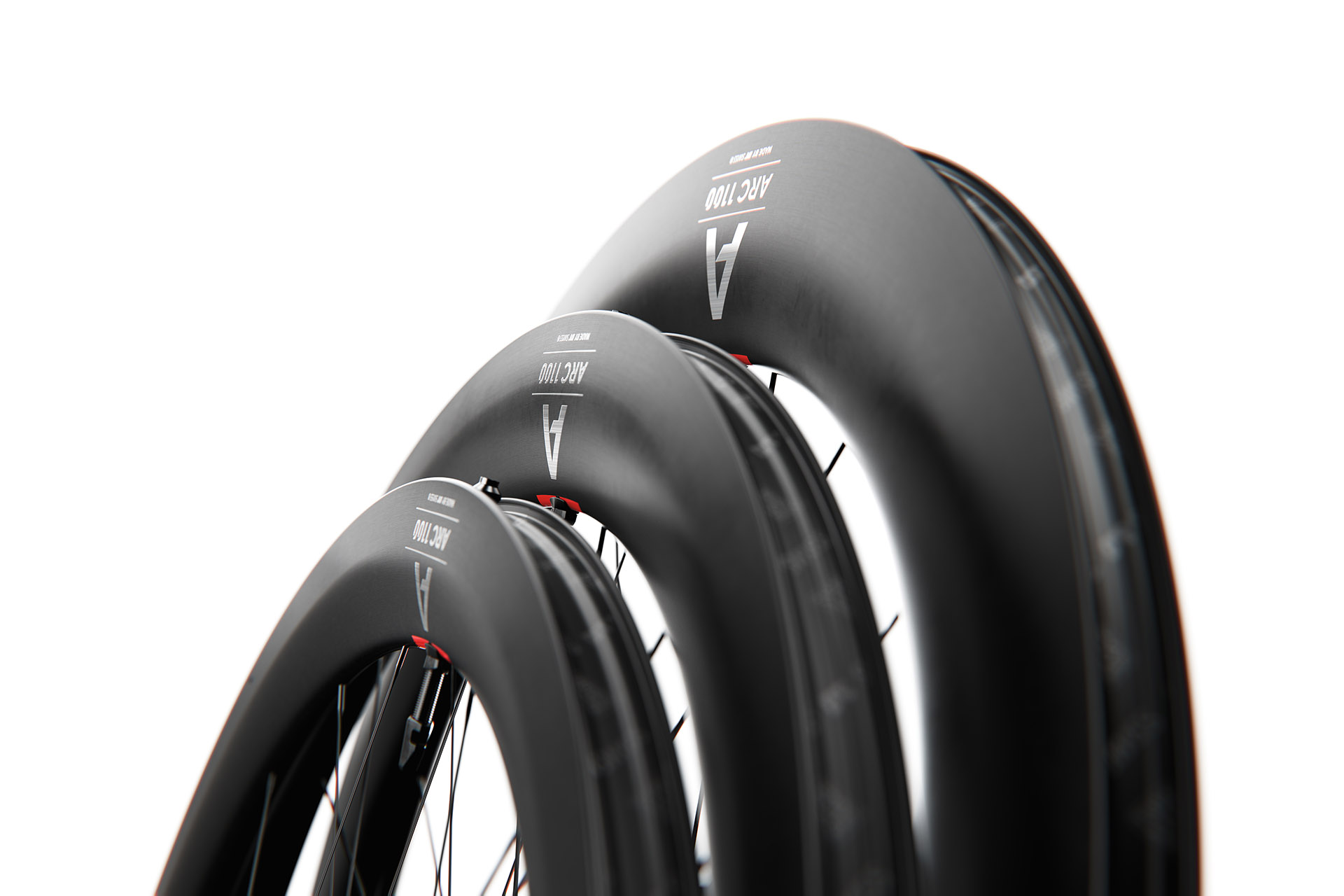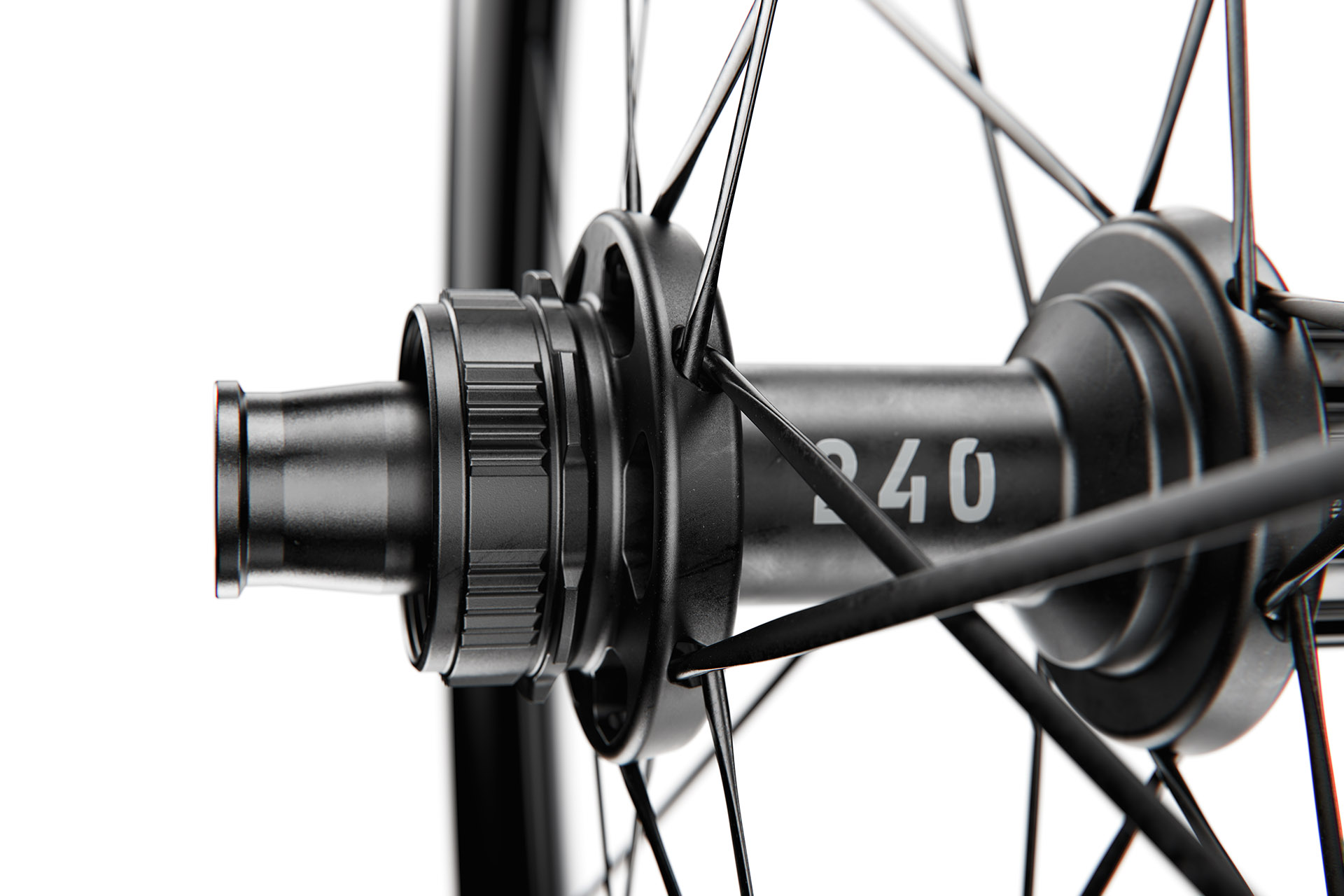
As the UCI bring in more and more rules around equipment in a bid to slow the pro peloton down and make racing safer, bike, wheel and clothing manufacturers continue to push in the opposite direction.
Wheel company DT Swiss has continued it's pursuit of speed with the third generation of its ARC (Aero Road Carbon) wheel portfolio that brings it in line with growing trends for wider internal rim widths, lighter weight and radically improved aerodynamic properties.
The Biel-based company says its mission with the new ARC wheels was to “take the lead and develop its fastest wheels yet,” focusing on balancing rim width and height with low weight.
The ARC range comprises two tiers, the 1100 and 1400, which differ in terms of hubs, spokes, and bearings. The 1100 models receive higher-end componentry for enhanced performance and a slightly lighter weight.
New design, new rim heights
The new ARC wheels feature a mildly updated design with new-look decals that indicate model designation by way of a coloured flag located below the valve: like before, red denotes the 1100, while grey represents the 1400.
Rim heights have increased over the previous model with rim depths growing from 50, 62 and 80mm to 55, 65 and 85mm. DT Swiss says each specific rim width serves a purpose and was designed for a wide variety of riding preferences. As expected, the 55mm rims are best for rolling terrain with the occasional steep climb, the 65mm have been optimised for sprinting scenarios or flat-out rides, while the 85mm model is the fastest in the range with the lowest drag – ideal for triathlons or time trials.
The inner rim width has grown considerably over the previous two generations and is now pegged at 22mm. Increasing the inner width has had a direct influence on the frontal area of the wheel, and the V-shape of the rim architecture has compensated for this by providing a lower drag figure and improved stability in crosswinds.

Reduced drag, improved aerodynamics
Using an in-house developed measurement rig, DT Swiss quantified the influence of a lower 20-spoke count on the rotational drag. The company compared the previous generation 24-spoke ARC 50 against the new ARC 55, both of which used a 28mm Continental GP 5000S TR tyre.
The measurements revealed a 0.2-watt reduction in drag at 0-degrees yaw and 0.5-watt (12% reduction) at a yaw angle of 10-degrees over the previous-generation wheels, claimed to be a result of the lower spoke count and shorter spokes from the 5mm higher rim profile.
Contrary to current rhetoric, aerodynamics encompasses not only drag but also handling, and DT Swiss states that the challenge in developing the new ARC wheels was to balance these two attributes to achieve optimal handling. The sailing effect creates a lot of side force on the wheel, so a balanced front and rear helps reduce the feeling of twitchiness – this is called the ‘steering moment.’ The steering moment is a result of the airflow not adhering to the rim and stalling or unloading, causing instability.
The company’s wind tunnel testing revealed the differences in steering moments at yaw angles ranging from -20 to 20-degrees – all wheels were fitted with 29mm Continental Aero 111 tyres. The varying gradients showed that ARC 55 and ARC 65 possess relatively low absolute steering moments, while the ARC 85 have a higher expected steering moment due to the higher rim profile.
Compared to rival brands, DT Swiss says its new ARC wheels have the lowest aerodynamic drag across 55, 65 and 85mm profiles and that the sailing effect at more extreme yaw angles is moderately lower compared to competitors from Hunt, Campagnolo and Zipp.

The Wheel Tyre System (WTS)
It has become increasingly de rigueur for wheels to be designed from the ground up as complete systems, taking the tyre and the virtual foil it creates into account. As a result, the third-generation ARC wheels were developed in a symbiotic relationship with the Continental Aero 111 tyre, balancing drag, handling, and efficiency – a concept DT Swiss refers to as the Wheel Tyre System (WTS).
Bolstering the lower drag provided by the V-shape of the wheel is the Aero 111 tyre’s unique vortex generators (the tread impressions), which add a substantial sailing effect and even steering moment in cross-winds. The result is a wheelsystem that offers perfectible handling, adding assurance and improving confidence to stay in an aero position for longer, both on a regular road bike and a time trial rig.
DT Swiss ARC wheel builds
The DRC range comprises two models: the 1400 and the 1100, both of which utilise DT Swiss hubs, spokes and internal DT Swiss Pro Lock nipples, with the main differences being the hub and spoke choice.
Like before, the 1400 range employs DT Swiss 240 EXP hubs and DT Swiss T-head Aero Comp spokes, while the 1100 wheels use DT Swiss 180 hubs laced with T-head DT aerolite spokes. The 180 hubs feature a 36T Ratchet EXP System complete with ceramic bearings.
The DT Swiss ARC 1400 range costs $2,504.80 / £1,999.98 / €2,149.80, while the range-topping ARC 1100 wheels will set you back $3,144.80 / £2,499.98 / €2,699.80.
All wheels come with a Shimano freehub body as standard, with SRAM XDR hardware also available.








